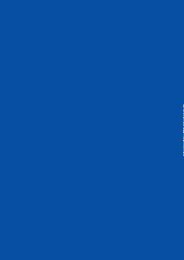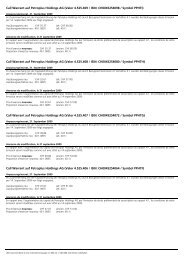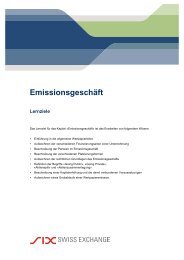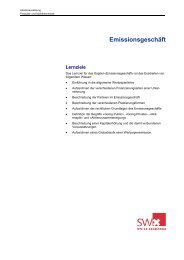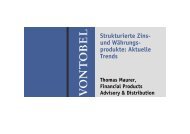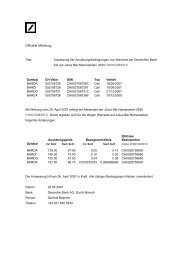Swiss Medtech Report 2012 - Medtech Switzerland
Swiss Medtech Report 2012 - Medtech Switzerland
Swiss Medtech Report 2012 - Medtech Switzerland
- No tags were found...
Create successful ePaper yourself
Turn your PDF publications into a flip-book with our unique Google optimized e-Paper software.
Invention<br />
Product<br />
Development<br />
22<br />
Manufacturing<br />
Facts & Figures<br />
Marketing &<br />
Market Access<br />
Regulation &<br />
Healthcare<br />
Navigating the regulatory jungle<br />
Funding &<br />
Financing<br />
The <strong>Swiss</strong> medtech market is traditionally characterized by fast time<br />
to market. With increasing regulatory and safety requirements, however,<br />
this is changing. <strong>Swiss</strong>medic, the supervisory authority, addresses<br />
this fact by providing information, training and recommendations<br />
and consulting firms such as ISS support companies in the efficient<br />
management of authorization procedures and quality controls.<br />
On its passage through the development, manufacturing<br />
and delivery chain, a medical device has to<br />
meet countless requirementst to protect patients and<br />
users. For marketing authorization alone, there are<br />
numerous provisions on the tolerability of materials<br />
(biocompatibility), functionality, quality and sterility<br />
to be complied with. For example, cleanroom requirements<br />
for assembly or the safety of packaging for<br />
items such as syringes are subject to validation by<br />
specific tests.<br />
Sticking on a Band-Aid is not associated with the<br />
same risks as the use of walkers or even a cardiac<br />
pacemaker. When a medical device is scrutinized in<br />
terms of compliance for marketing purposes, it is<br />
subject to requirements, the stringency of which is<br />
dependent on its risk class. The potential risk is also<br />
a factor which determines how it is tested in humans.<br />
For example, clinical trials with implants must fulfill<br />
the highest scientific and ethical criteria, as well as<br />
statutory requirements in terms of patient information<br />
and insurance coverage for injuries.<br />
10,000 PaGEs OF DOCUMENTaTION<br />
Whether for the development, composition or functionality<br />
of a product and for liability reasons as<br />
well, all relevant information must be meticulously<br />
documented in manuals and regularly updated. Depending<br />
on the risk class up to 10,000 pages may<br />
be required for technical and clinical documentation.<br />
In addition, manufacturers of products on the<br />
market are obliged to maintain a system for product<br />
surveillance. In this system, information on safety,<br />
quality, stability and performance of medical de -<br />
vi c es in actual use must be collected and evaluated.<br />
Here traceability is becoming ever more critical. It<br />
serves as proof of quality and allows for the efficient<br />
recall of products.<br />
Serious adverse events and measures taken to correct<br />
them must be reported by manufacturers and<br />
users to <strong>Swiss</strong>medic, the <strong>Swiss</strong> authorization and regulatory<br />
authority for therapeutic products, and/or<br />
coordinated with it. Some 1,800 reports on medical<br />
devices are registered annually, i.e. nearly twice as<br />
many as in 2005. The largest increase was recorded<br />
between 2009 and 2010, resulting from the revision<br />
of the <strong>Swiss</strong> Regulation on Medical Devices (Medizinprodukteverordnung).<br />
Through implementation<br />
of the changes to European law, this entailed, among<br />
other things, the reclassification of a few surgicalinvasive<br />
products from Risk Class IIa to Class III.<br />
Besides erroneous classifications, the most frequent<br />
causes of undesirable events are labeling and packag-<br />
ing problems, incorrect product descriptions and<br />
software errors. Once the corrections carried out,<br />
they are published by <strong>Swiss</strong>medic, which also issues<br />
safety alerts on its own, for example if a manufacturer<br />
is faced with bankruptcy.<br />
CONsCIENTIOUs MaNUFaCTURERs<br />
“In principle, the manufacturers take their responsibilities<br />
seriously. The surveillance system works, and<br />
the SIRIS implant register provides another valuable<br />
instrument for quality control,” says Karoline<br />
Mathys, a member of <strong>Swiss</strong>medic’s Management<br />
Board. Hans-Jörg Riedwyl, CEO of Integrated<br />
Scientific Services (ISS) AG, also stresses that <strong>Swiss</strong><br />
medtech companies have a strong tradition of quality<br />
and safety consciousness with respect to patients.<br />
For this reason, he cannot imagine cases of fraud,<br />
such as that of the PIP implants in France.<br />
INNOvaTION-FRIENDLY sWITZERLaND<br />
“With a time to authorization of only a few months –<br />
in contrast to Japan where it takes up to two years –<br />
<strong>Switzerland</strong> offers an environment that is conducive<br />
to innovation. It often serves as a test market<br />
for international companies before they enter other<br />
countries,” says Ulrich Hofer, head of Regulatory<br />
Affairs & Science at ISS. Despite years of effort to<br />
achieve the global harmonization of laws covering



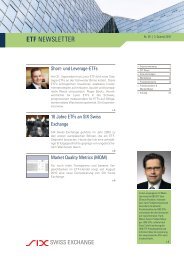
![Formular für nicht regulierte Unternehmen[pdf] - SIX Swiss Exchange](https://img.yumpu.com/21559295/1/184x260/formular-fur-nicht-regulierte-unternehmenpdf-six-swiss-exchange.jpg?quality=85)
![Gastbeitrag[pdf] - SIX Swiss Exchange](https://img.yumpu.com/21558666/1/184x260/gastbeitragpdf-six-swiss-exchange.jpg?quality=85)

